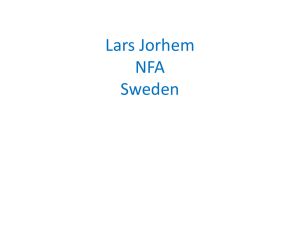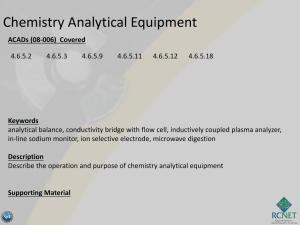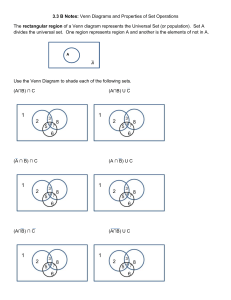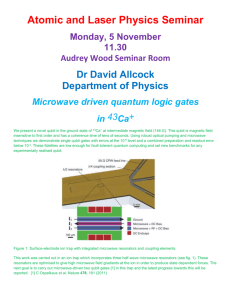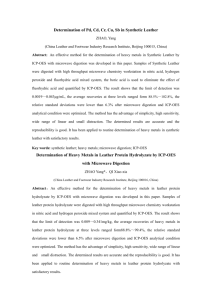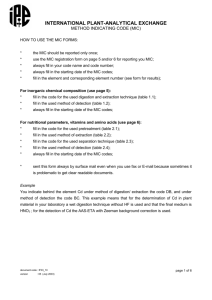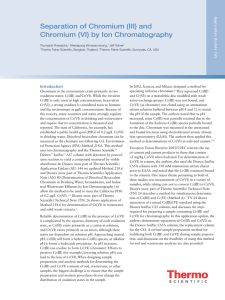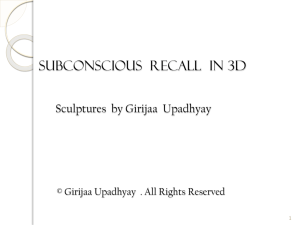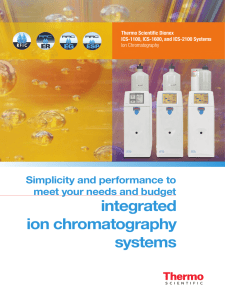Auxiliary_Materialtext02
advertisement
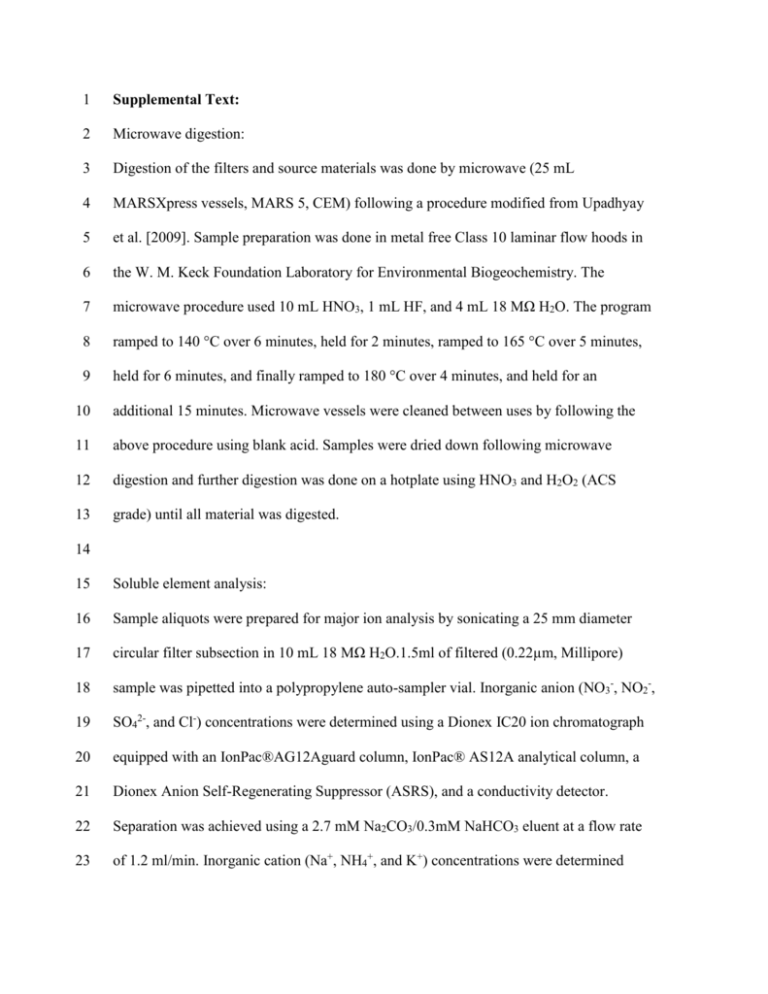
1 Supplemental Text: 2 Microwave digestion: 3 Digestion of the filters and source materials was done by microwave (25 mL 4 MARSXpress vessels, MARS 5, CEM) following a procedure modified from Upadhyay 5 et al. [2009]. Sample preparation was done in metal free Class 10 laminar flow hoods in 6 the W. M. Keck Foundation Laboratory for Environmental Biogeochemistry. The 7 microwave procedure used 10 mL HNO3, 1 mL HF, and 4 mL 18 MΩ H2O. The program 8 ramped to 140 °C over 6 minutes, held for 2 minutes, ramped to 165 °C over 5 minutes, 9 held for 6 minutes, and finally ramped to 180 °C over 4 minutes, and held for an 10 additional 15 minutes. Microwave vessels were cleaned between uses by following the 11 above procedure using blank acid. Samples were dried down following microwave 12 digestion and further digestion was done on a hotplate using HNO3 and H2O2 (ACS 13 grade) until all material was digested. 14 15 Soluble element analysis: 16 Sample aliquots were prepared for major ion analysis by sonicating a 25 mm diameter 17 circular filter subsection in 10 mL 18 MΩ H2O.1.5ml of filtered (0.22µm, Millipore) 18 sample was pipetted into a polypropylene auto-sampler vial. Inorganic anion (NO3-, NO2-, 19 SO42-, and Cl-) concentrations were determined using a Dionex IC20 ion chromatograph 20 equipped with an IonPac®AG12Aguard column, IonPac® AS12A analytical column, a 21 Dionex Anion Self-Regenerating Suppressor (ASRS), and a conductivity detector. 22 Separation was achieved using a 2.7 mM Na2CO3/0.3mM NaHCO3 eluent at a flow rate 23 of 1.2 ml/min. Inorganic cation (Na+, NH4+, and K+) concentrations were determined 24 using a second IC20 ion chromatograph equipped with an IonPac® CG12A guard 25 column and an IonPac® CS12A analytical column, a Dionex Cation Self Regenerating 26 Suppressor (CSRS), and a conductivity detector. Separation was achieved using a 20 mM 27 methanesulfonic acid eluent at a flow rate of 1.0 ml/min. Both IC systems were calibrated 28 daily using a series of laboratory-prepared ion standards. For all of the major and minor 29 elements listed above, the soluble phase was isolated using an acetate buffer extraction 30 and analyzed by ICP-MS analysis of the same elements detailed previously [Upadhyay et 31 al., 2011]. Filter subsections were added to 8 mL of a 5 mM acetate buffer at pH 4.3 on a 32 shaker table for 2.5 h. The solutions were filtered with a 0.22 µm polyethersulfone (PES) 33 syringe filter (Millipore Millex). 34 35 References: 36 Upadhyay, N., B. J. Majestic, P. Herckes (2011), Solubility and speciation of atmospheric 37 iron in buffer systems simulating cloud conditions, Atmos. Environ., 45, 1858-1866, 38 doi:10.1016/j.atmosenv.2011.01.010. 39 40
